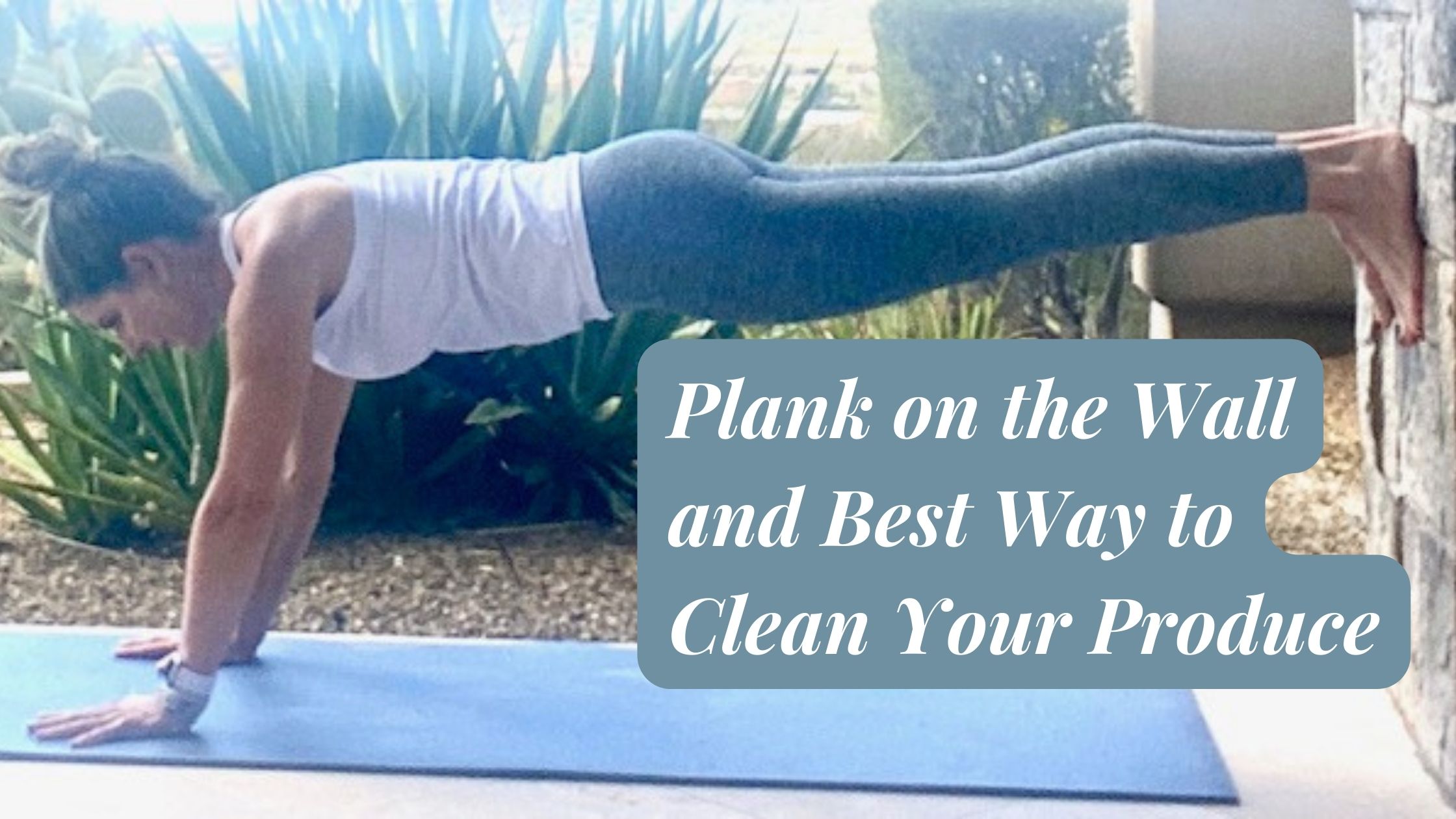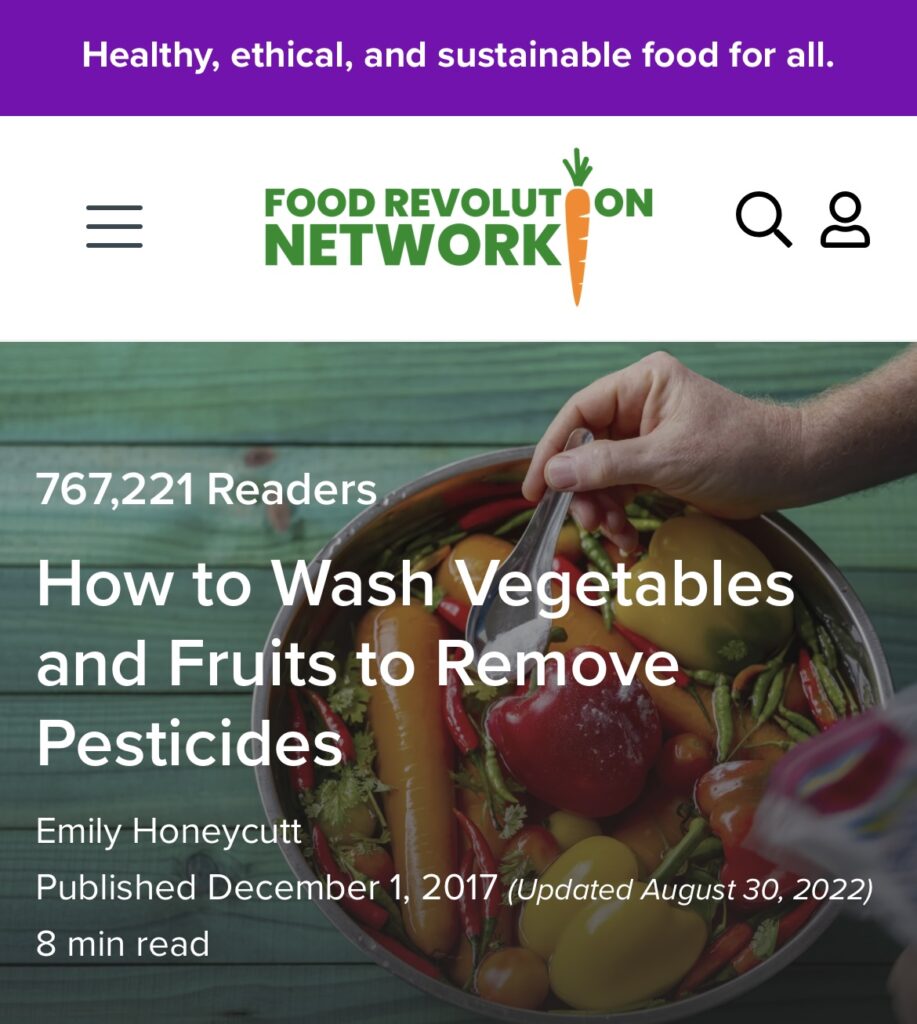One inspiring cue:
PLANK POSE ON THE WALL
- Come into a long Downdog with your heels touching a wall (walk your hands further forward than you are used to).
- Hinge forward a little and take one foot to the wall – you may need to walk you hands even further forward as you do this to find the right spot. When you push into Plank pose, you will want your shoulders to be over your wrists or slightly behind them.
- As you strongly push one foot into the wall, continue to hinge forward so you’re in a one-legged plank.
- With this strength, float your other foot off the ground, eventually pressing it into the wall for your Plank Pose on the Wall.
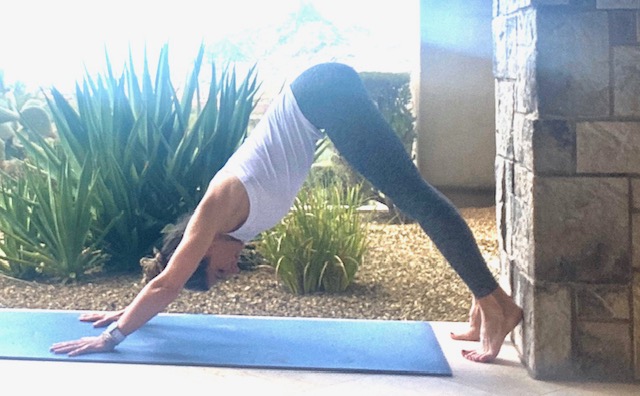
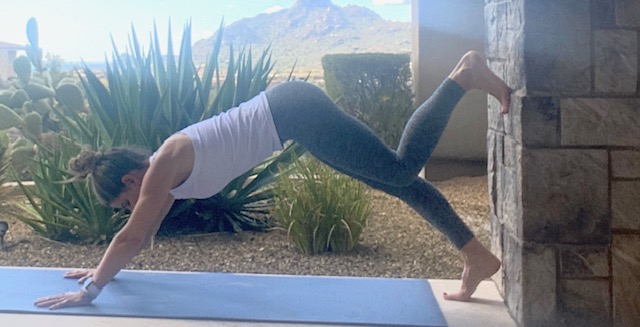
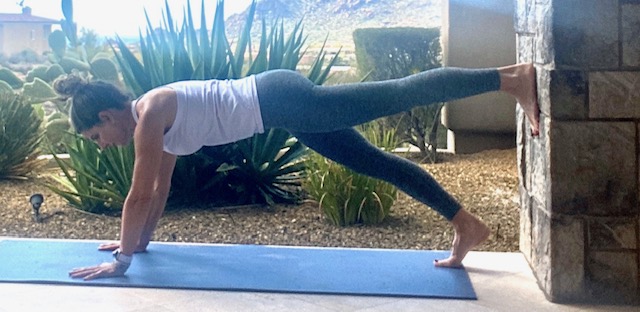
Why?
I like this version of Plank because it really forces you to focus on your alignment and you end up using your upper body and core strength differently than in a traditional Plank pose. It’s good to stress your joints and muscles at different angles as long as you are controlled in both your body and your breath. And, of course, it’s always just fun to practice new and different variations of poses!
One inspiring tip:
Put non-slip socks on or use a wall that has some traction. Also, you may want to start with your feet higher than your hips to help with better traction.
One inspiring song:
“Inner Light” by Elderbrook, Bob Moses
One inspiring quote:
“Balance is not something you find, it’s something you create.” – Jana Kingsford
Nutrition nugget:
THE BEST WAY TO CLEAN YOUR PRODUCE TO GET RID OF PESTICIDES
It drives me crazy when I see my husband rinse veggies or fruit in water for all of 3 seconds…argh! “Washing produce is important to prevent foodborne illness and substantially reduce your exposure to pesticides.” – Food Revolution Network
Until recently, I only used water to rinse my produce. I don’t know where I came across the idea to use baking soda (probably Instagram), but I did a little digging, and sure enough, it seems to be the best way to clean your food!
“What may be the best and most affordable way to clean fruits and veggies comes from a recent study published in the Journal of Agricultural and Food Chemistry, which compared the effectiveness of plain water, a Clorox bleach solution, and a baking soda and water solution. Perhaps surprisingly, the baking soda solution was found to be most effective at removing pesticide residues from the surface of apples.
The baking soda solution used in the study was very weak – a mixture of only one ounce of baking soda with 100 ounces of water and it took 12-15 minutes of soaking to completely remove the pesticides.” – Food Revolution Network
Read the full article by clicking here or on the image below.
In a related topic, I get a lot of questions about if organic is really better for you. Here’s what Food Revolution has to say,
“Many shoppers choose organic foods because they are grown and produced without the use of pesticides. And because many pesticides are banned from organic agriculture, it is indeed a big step in the right direction. But nearly all farmers – even organic farmers – use some pesticides. They just use different ones.
Why would organic farmers use pesticides? Like conventional farmers or anyone who has a backyard garden, organic farmers are faced with weeds, insects, and diseases. But most of the pesticides on the USDA Organic list of allowed substances are natural in origin.
While conventional farmers are allowed to use 900 different synthetic pesticides, organic farmers are allowed to use only 25 synthetic pesticides – and then only in carefully regulated ways.”
I’m looking forward to “cleaning” up our act this month by practicing our planks and soaking our produce in baking soda! March is a busy month, but you’ll hear from me again in a couple of weeks with my next newsletter. Until then, enjoy the clean, spring air that’s on it’s way!!

